Going Nuts…
This fall we are having a bumper crop of black walnuts here in Amherst. All summer I’ve been eyeing the big green spheres hanging high in the trees around town, anticipating the happy day when they would start to fall to the ground. The happy day has arrived. At the moment I have a 5 gallon bucket of hulls outside soaking, and three more full of nuts waiting to be processed.
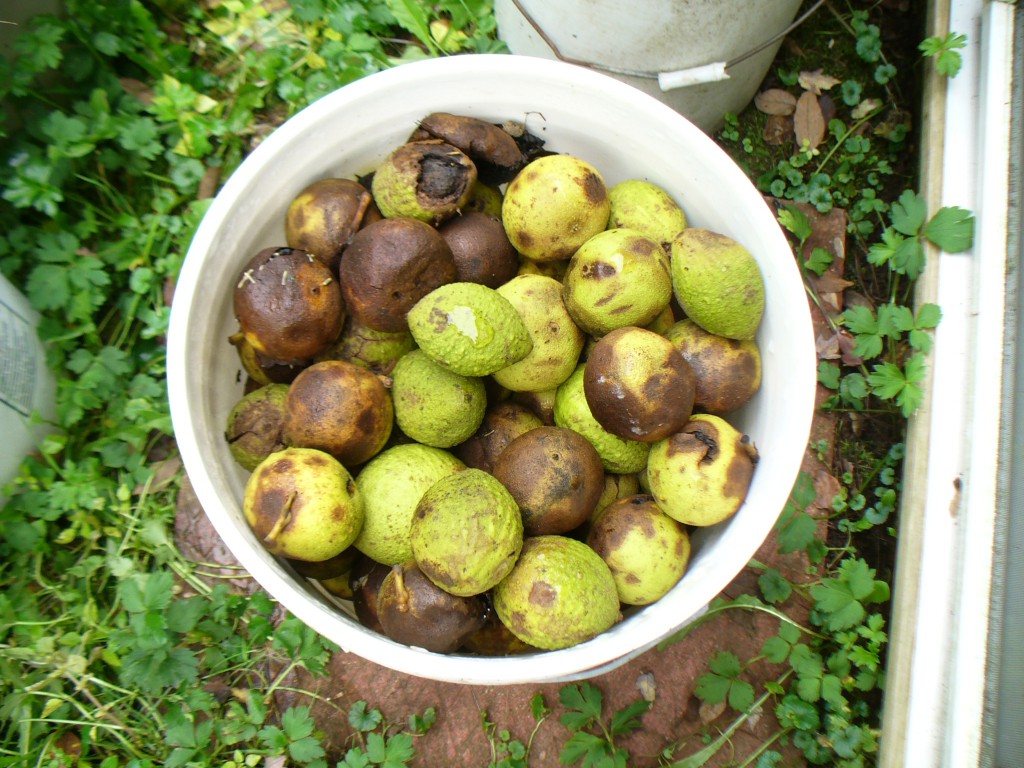
Thanks to a former student of mine, I now have a quick and fun way to get the hulls off the nuts. I used to laboriously cut off the hulls with a knife. This is time consuming and a bit dangerous. The hulls are thick and tough. After once staining my hands a really ghastly shade of mottled zombie skin, I always wore thick gloves for this task. But wearing gloves makes my hands sort of clumsy, and the hulls are juicy, and the knife can get slippy…. Fortunately, about 4 years ago, one of my students invited me to collect black walnuts from his mom’s back yard. While I was there, he showed me his method for getting the hulls off: place the nuts on a cinder block and whack them with a piece of 2×4. The hulls pop right off! You can bash ’em with a brick, too.
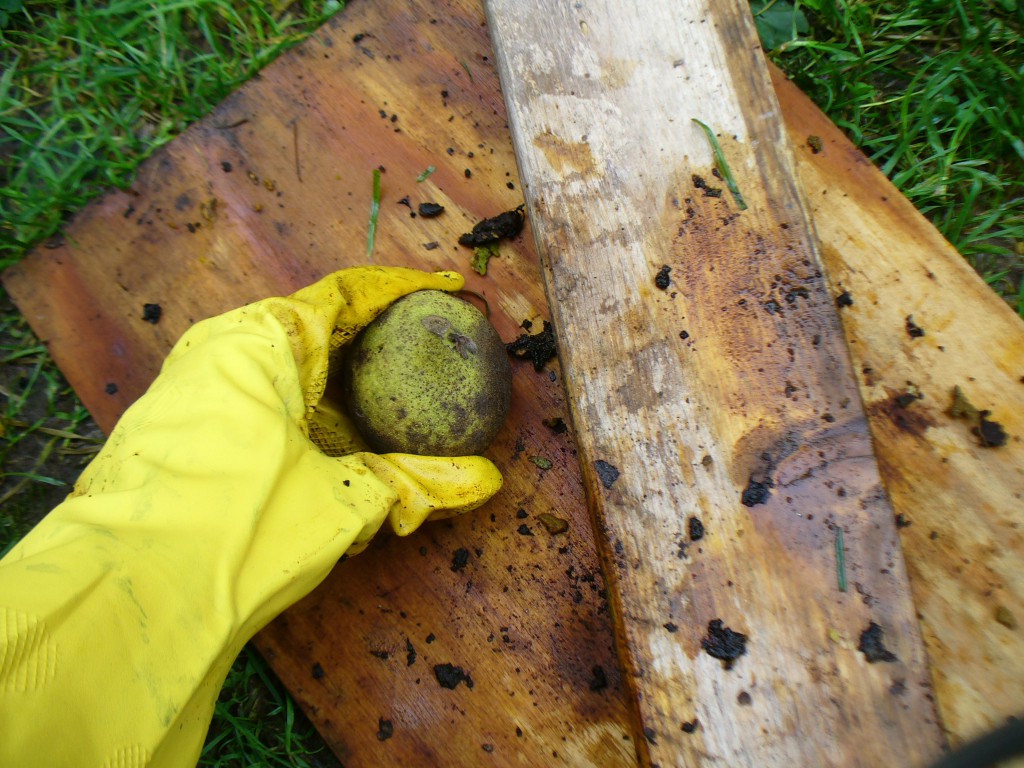
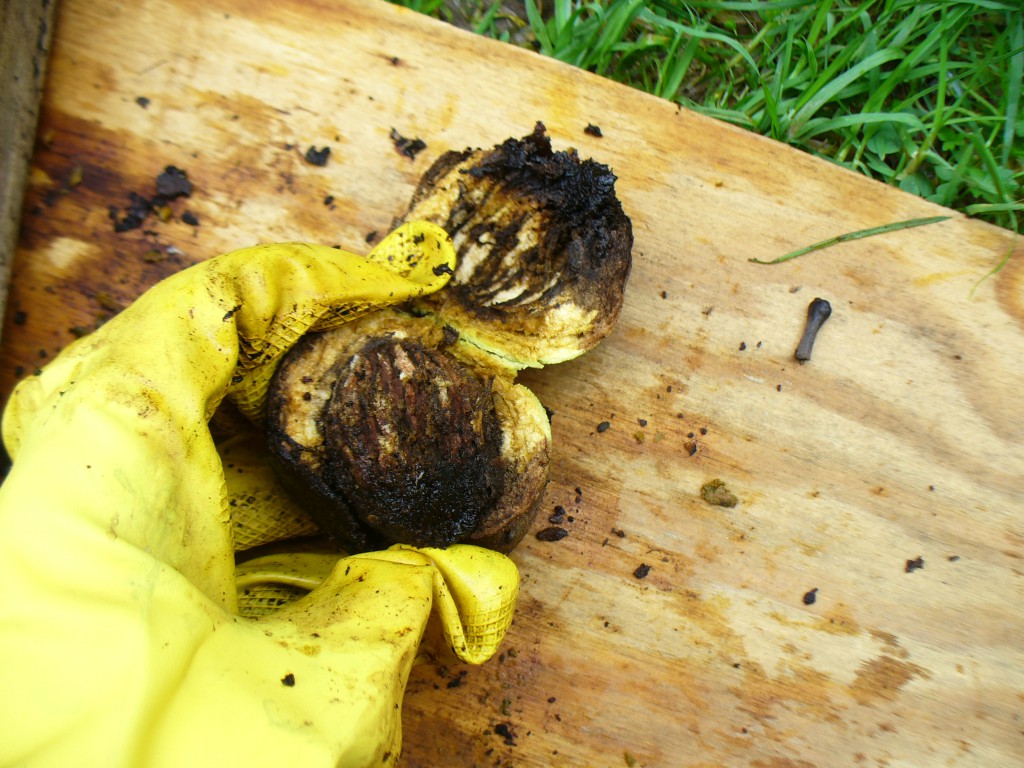
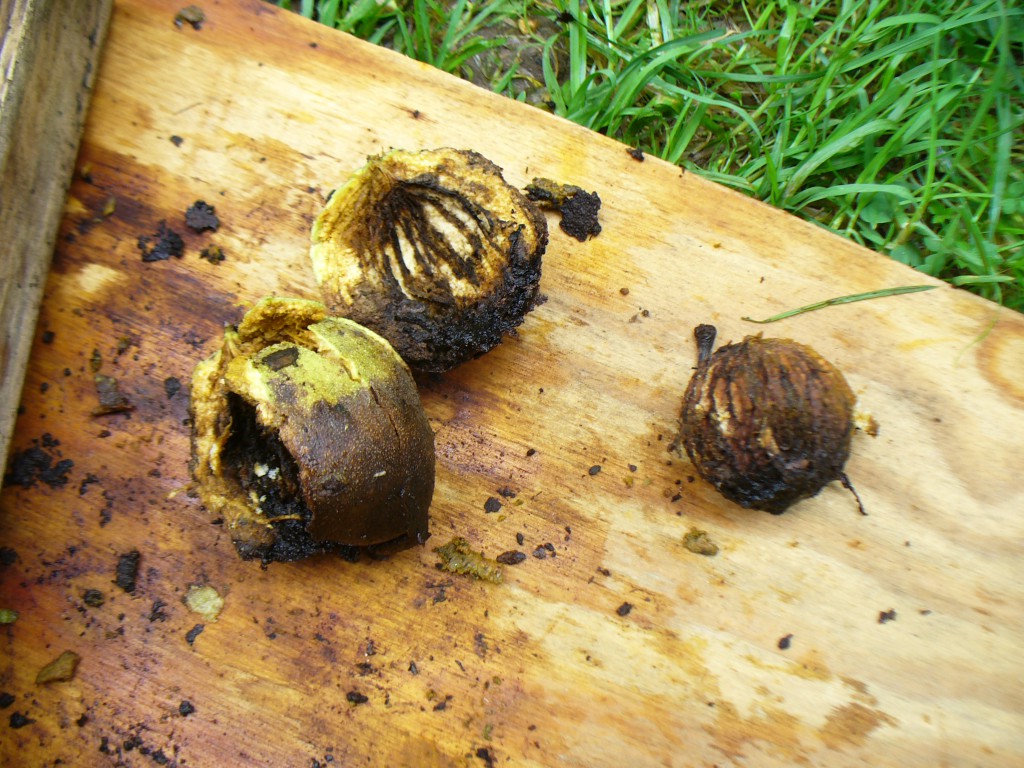
After all this bashing, what color do you get from black walnut hulls? Various shades of brown from rich and reddish to silvery grey. I have sometimes wondered whether it is foolhardy to dye white wool brown, when there is plenty of brown wool to be had. But I find black walnuts hard to resist. They are fragrant and abundant. And forgiving; you can let them rot in a bucket for months with no harm done. I let them freeze outside over the winter, which has been bad for the buckets but no problem for the walnut hulls. Some people find them a nuisance when they’ve been littering the ground for a few days, and get all smooshed up and brown and squishy. So really, why not use them? Since I have become more interested in dyeing plant fibers over the past couple years, my new quest this fall is to get a good dark color on linen yarn. Here are some images of walnut dyed wool and linen from seasons past. I’ll keep you posted on my dark-brown-linen ambitions.

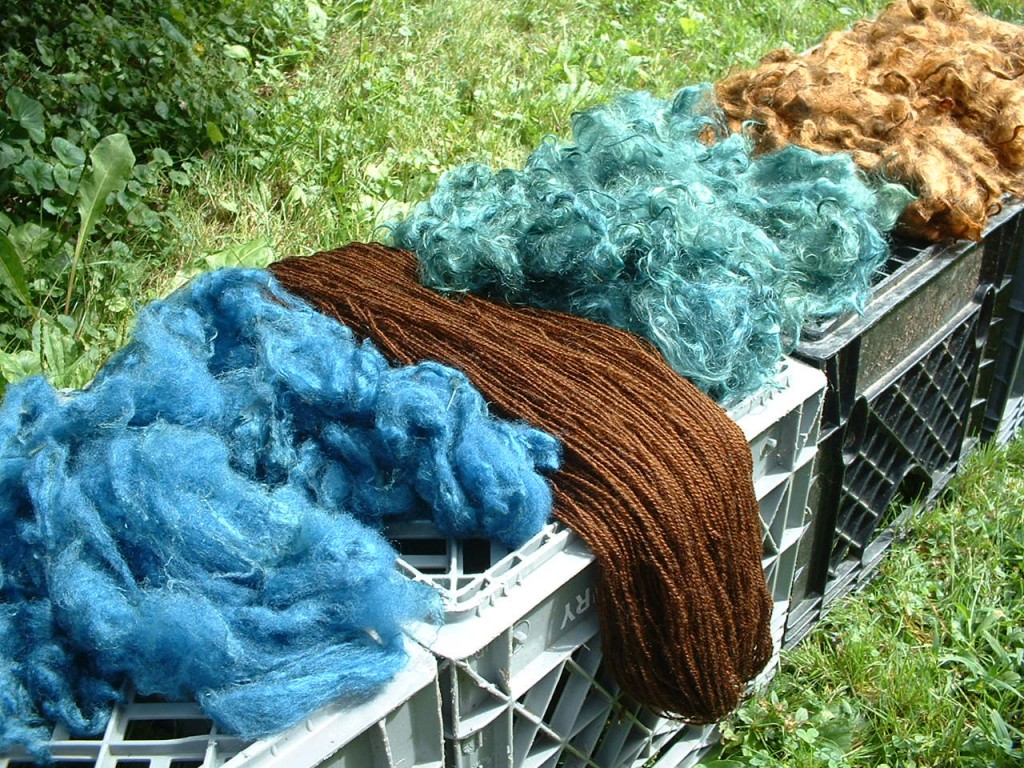
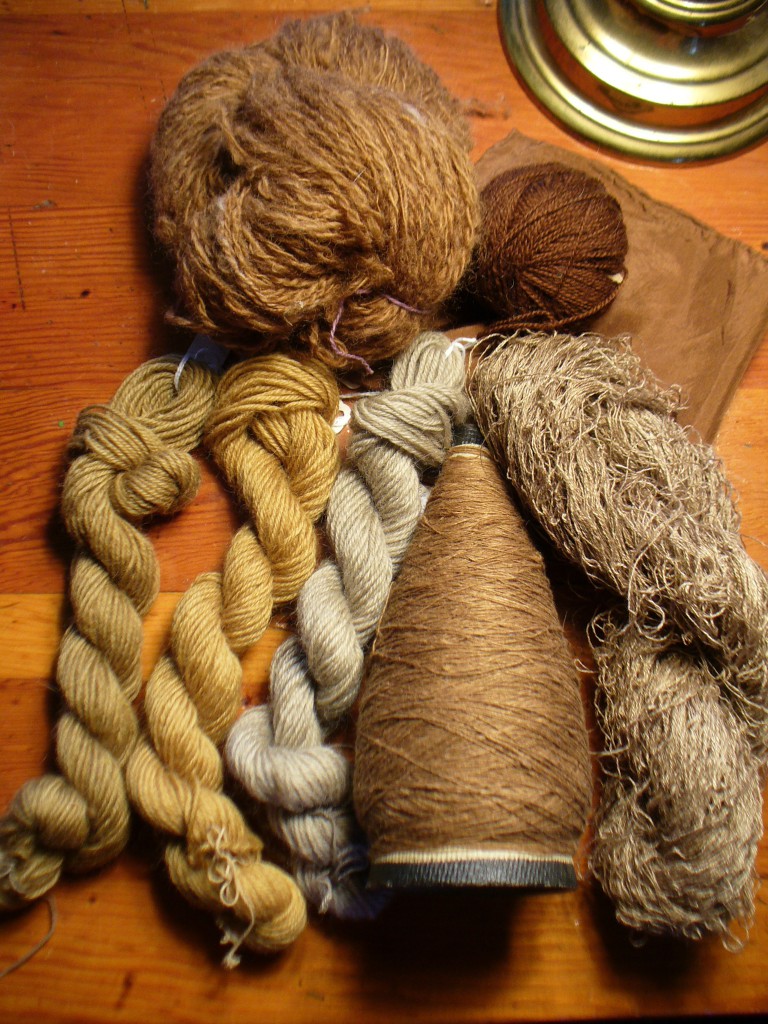
On Saturday, October 1st, I will be introducing others to the pleasures of black walnut hull-bashing, and the fragrant scent of simmering hulls, at Small Ones Farm in South Amherst. I’m hoping people get as much of a kick out of it as I do.
